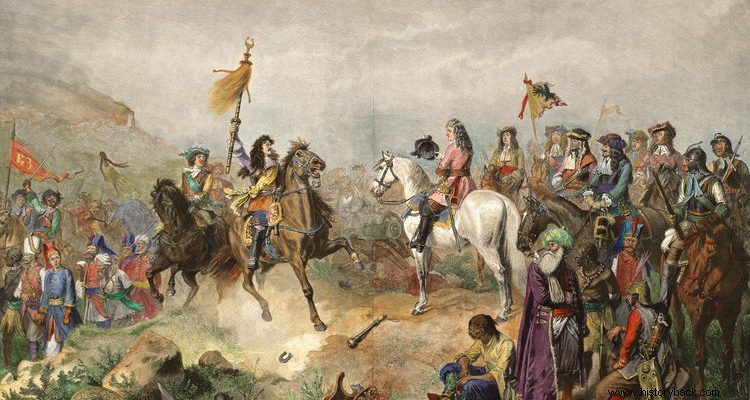
In 1526 the huge army of Suleiman the Magnificent crushed the small army of the Hungarian king Laios at Mohács in southern Hungary. After this "glorious" victory, the Ottoman troops, after spreading death and destruction, conquered the rest of Hungary without a fight and reached Vienna, which they unsuccessfully besieged.
In the exact same field, fate had reserved a similar fate for the Turkish mobs, 161 years later. The battle was fought on August 13, 1687. The Christian army, under Prince Charles of Lorraine and Maximilian Emmanuel of Bavaria, numbered about 50,000 men. The Turkish forces, under the Croatian commander Sari Suleiman Pasha, were four times larger. Nevertheless, it disintegrated, leaving behind 10,000 dead and as many wounded against only 600 casualties of the victors.
The second battle of Mohács had catalytic consequences, just like the first. It was not just revenge for the defeat of the Christian arms, on the same field, in 1526, but it brought the Ottoman Empire to the brink of collapse. In terms of strategic importance, it should therefore be counted among the most important in history, although unfortunately, it remains largely unknown.
At the tactical level the battle was fought and won, essentially by the division of 20,000 men commanded by Maximilian Emmanuel and Louis of Baden. The former faced the first Turkish attack, alone, and the latter took full advantage of the defensive success of his men, during the Turkish attack, he counter-attacked and put the Turks to flight. The Christian victory and above all the huge disproportion of losses on both sides can be explained in a simple way. European martial art had already overcome the outdated Turkish battle tactics.
Things would get even worse for the Turks as time went on, as their opposing European armies would be fully equipped with modern flintlock muskets and bayonets that fit into their barrels without obstructing the shot , as was the case with the original models of bayonets, the so-called "planters", which were fitted to the muzzle of the musket barrel, prohibiting, of course, shooting.
This development in weaponry, combined with the adoption of new firing systems, even more effective, gave the Europeans a huge advantage, which the Turks, mostly due to mentality, never managed to cover, despite some successes they had to show in the first half of the 18th century. The Turks remained, until the beginning of the 19th century, anchored in the doctrines and tactics of the time of Suleiman the Magnificent, relying for their success on their numerous cavalry and the drive of the janissaries. If these two elements of their tactics were neutralized, in one way or another, defeat would follow naturally.
